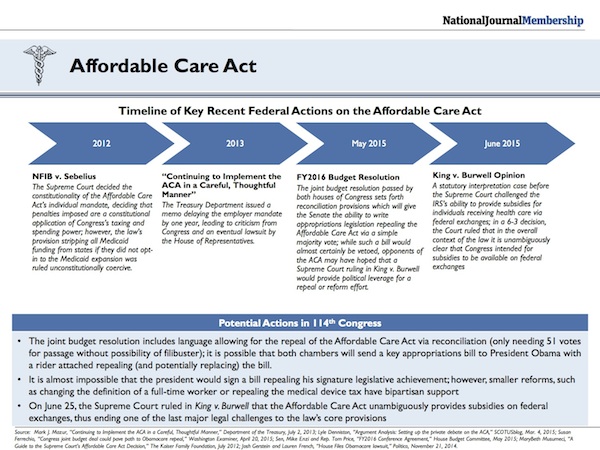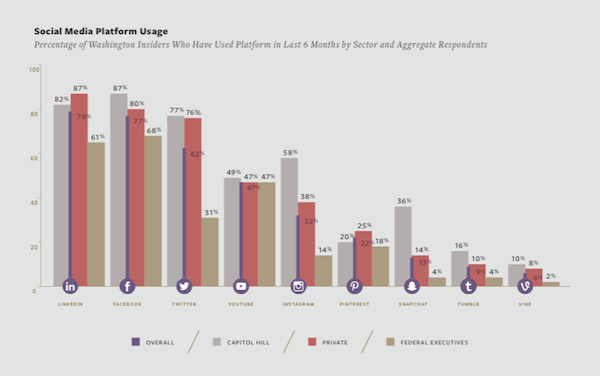
In fall 2011, Atlantic Media chairman David Bradley wrote an memo about his career, leading right up to when he bought National Journal and The Atlantic Monthly. It was a roadmap wrapped around a personal narrative, a push to move the politics and policy-focused National Journal titles away from approaching competitors and into new territory. Bradley wrote:
Membership is a popular concept among media executives, an idea older than the public radio pledge drive. In recent years, print and digital news companies have taken up membership as an alternative to traditional subscriptions. But for many publishers, the shift from subscriber to member is subtle — a few additional benefits, like discounts or tickets to events, but not much more.At the level of long-term strategy, my thought for the National Journal Group (and its 200+ employees) is to set the firm apart, from competition, to create it truly different in kind, not just degree. This is a matter of new services — some apart from journalism and staffed by researchers — for our readers…This is, as well, however, a change in posture towards those who finance our work. I would like to convert our purpose from cross-selling new publications to the membership ethic of unlimited service to our readers.
Four years after Bradley’s memo, National Journal’s membership business has grown: Around 1,000 organizations hold memberships, and according to National Journal Group CEO Tim Hartman, they have a 93 percent renewal rate. That’s at membership fees that run into the five or six figures annually. Membership makes up between 50 and 60 percent of total revenue for National Journal Group, which the company projects will grow 12.3 percent over 2014’s totals.
While events have become an integral part of National Journal’s membership experience, what might set the company’s program apart is its research arm, which produces reports, presentations, and other documents to arm users in their day-to-day work. For their members — lobbying groups, corporations, NGOs, and others — that information has real use.
The move to membership has helped the company’s bottom line in the short term. But Hartman said the bigger benefit is how it has redefined the role the company plays with people they used to called “readers.” “It’s a much more strategic relationship than when a media company is producing lots of content for them to read or use,” Hartman said.
In blowing up their own subscription model, National Journal chose a system that would let entire companies gain access to their family of publications like National Journal Hotline, The Almanac of American Politics, as well as the print and digital versions of the flagship magazine. The timing was important: National Journal’s new membership plan debuted seven months after the launch of Politico Pro, a similarly insider-y product for D.C. professionals.
Where Politico Pro focused on faster delivery of information and deep knowledge of policy issues, National Journal’s plan was to translate that data into more tangible insights. As Bradley outlined in his memo, among the core services would be the National Journal Presentation Center, a weekly Washington memo, and an annual study on best practices on communicating with Congress.Today that takes the form of research products available to members from National Journal’s 20–person research team. If you’re looking for a timeline of congressional action around the Affordable Care Act, or a PowerPoint of recent polling data for the field of Republican presidential candidates, it’s available for download. And, since it’s all white-labeled, any member can slap their branding on it and call it their own.

Poppy MacDonald, publisher and president of National Journal, said the change was a response to the evolving needs of the audience. Where some readers enjoy articles on Medicaid expansion, others are trying to synthesize that reporting into the parts that are relevant to their industry, she said. “People said the journalism is valuable to me, but a lot of the work for me is to translate it to my constituency.”
The presentation center is by far the most popular feature in the membership program; MacDonald says around 90 percent of members use the service during a given week. Another feature, the Toolbox, aggregates news and research for members across selected topics on a weekly basis.
National Journal holds around four events a month, ranging from member lunches and best practices discussions to topical panels. MacDonald said around 80 percent of member organizations have attended at least one in-person event. Last year, National Journal launched the Communications Council, a separate membership-based group that provides research and events targeted at communications professionals.
Research and events often go hand-in-hand for National Journal. The annual Washington in the Information Age report, a study detailing the communication habits and preferred mediums of private sector and federal executives, is released every spring in conjunction with an event and discussion.
Research and corporate intelligence have grown as a strategy for media companies in recent years. While some, like National Journal, tether research to memberships or subscriptions, others have launched independent products. Skift, the travel data and information startup founded by Rafat Ali, offers annual subscriptions for monthly trend reports on the travel industry, starting at $1,595 for individual subscriptions. In January, The Christian Science Monitor launched Monitor Global Outlook, a service that provides custom analysis on business and political issues from a network of specialists around the world. Earlier this month, Politico announced it plans to add a congressional director and legislation tracker to Politico Pro. What they share is similar target audiences: corporations, lobbyists, NGOs, and the like.
Kevin Turpin, executive director of strategy and operations at Atlantic Media, oversees the research group for the membership program. He said members are looking for everything from the makeup and voting patterns of Congressional subcommittees to the social media habits of Capitol Hill staffers. Individuals can call up their account manager at National Journal if they need specific information around, say, immigration, or the spending priorities of the president’s 2016 budget. While they don’t produce reports on demand for members, they can often point them to their existing work, Turpin said. They also survey members annually to find out the topics they would like to see deeper research.

The Washington in the Information Age study is one of the more popular studies for members, offering a glimpse at the social networks of choice in D.C. (Linkedin is favored over Facebook) and the daily media consumption habits of hill staffers (they start their day with email newsletters on their phones), private sector professionals (also email newsletters), and federal government executives (television is their first a.m. stop).
Rob Stoddard, senior vice president for communications and public affairs for the National Cable and Telecommunications Association, said reports like that one helps the NCTA direct its messaging more effectively. Stoddard said the NCTA pays close attention to agencies like the Federal Communications Commission, as well as telecommunications or technology initiatives coming out of the White House. For an organization that has to choose whether to spend money on traditional advertising or working through social media, that research is valuable, he said.
“I’m not a digital native, so in many ways, I’m working overtime to stay if not ahead of this, at least up with it,” Stoddard jokes.
Along with research products, the NCTA also regularly participates in events around the National Journal Communications Council, which Stoddard called a good opportunity to discuss issues with similarly minded people who work in communications or advocacy. The transformation of National Journal itself is a good example of how organizations in and around media have to adapt, he said. “It’s no longer a scenario in which information and sharing is one-way, where a publication simply dispenses news,” he said.
NCTA has been in the membership program since launch and pays five figures annually for it, Stoddard said. He said there’s still room for Atlantic Media to improve coordination within the program, which is split between different parts of Atlantic Media. But Stoddard casts the program as a success. “We no longer look at National Journal simply as a news source, but as a collection of resources, as well as a collection of experts we can turn to on occasion,” he said.
Hartman, who has been with Atlantic Media for more than a decade, said changes in publishing and technology mean the competition for National Journal is different than it was in the past. The audience is trying to understand that same upheaval, which creates an opportunity for National Journal, he said. “Our core audience is in a time of need for insights and guidance on how these trends are evolving,” he said. “We can help them do their jobs, on a fundamental level, better and better.”
The company tries to add a new product to the membership program each year; last year’s was the Communications Council. Hartman said finding ways to diversify how they make money is key to being a successful media company today. “The more revenue streams we can build around the National Journal brand, the stronger we’ll be in the long term,” he said.
Even with those changes, Hartman believes National Journal’s brand — insightful information on the movement of power in D.C. — remains the same. “The way we deliver services and journalism has evolved dramatically. And it’s all successful because we anchored it around the needs of our users,” he said.